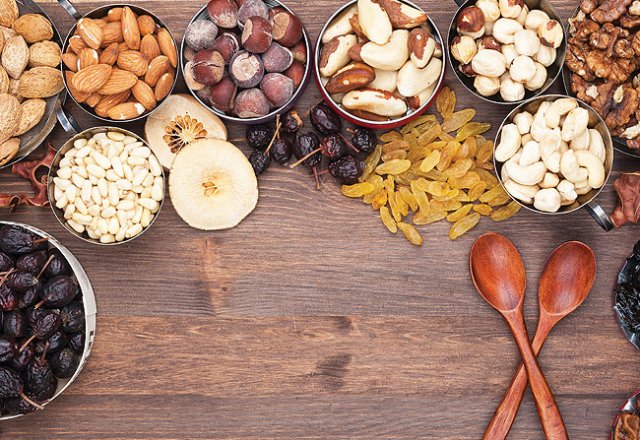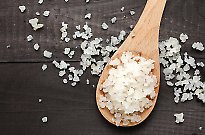
Homemade health foods

It's time to get back in the kitchen!
Some health foods are easier to make at home than you'd guess and come packed with more health benefits then money can buy, writes Louise Wedgwood.
Choosing wisely from the burgeoning number of supermarket ‘health foods’ is more daunting than ever, but more Australian families are turning away from supermarkets and back to their kitchens. Their desire for simple food is not about thrift, but health and sustainability – they want food that comes without chemicals, plastic packaging and high food mileage.
Amanda Brocket is a qualified raw food teacher and part of the trend that is gaining popularity. “There are so many health foods you find at the supermarket that can be made at home easily and without any of those nasty additives or preservatives or being highly processed,” Brocket says.
It’s a change in our appetites that manufacturers are wise to, with 17 per cent of new foods and beverages around the world now marketed as ‘natural’, ‘additive-/preservative-free’, or both. Despite manufacturers’ efforts to convince us of their foods’ purity, even less processed supermarket foods are not as fresh or nutritious as their homemade counterparts.
Baby food is one vital area where recent research shows the cost to health of supermarket food outweigh its convenience. The research, published last September in the Archives of Disease in Childhood, found that commercial baby foods lack key nutrients and are sweeter than homemade foods. Any type of food processing alters the nutrient value of food, but processes that expose foods to high levels of heat, light or oxygen cause the greatest nutrient loss. Water-soluble vitamins are the most vulnerable, particularly folate, thiamine (B1), and vitamin C. Foods that contain valuable probiotics, such as yoghurt, also lose their health benefits while they sit in transit or storage, as the numbers of live bacteria decline. Much of the processing that food undergoes prevents it from spoiling or simply changing in appearance. However, food that travels only from your kitchen to your plate doesn’t have time to go funny or go off, and doesn’t need these precautions.
Fresher foods also offer a more pleasurable sensory experience. The enjoyment of eating velvety-fresh ricotta does not compare to the sensation of the rubbery or plastic-tainted product bought from the dairy section; you can’t bring home the smell of baking bread in a plastic bag; and pesto from a jar is a mere shadow of the zesty version made fresh from your garden.
Missing nutrients
Perhaps even more important than nutrients your homemade food contain are the things they leave out. To illustrate, there are just two ingredients needed for homemade yoghurt – milk and culture. If you want a sweet, vanilla-flavoured yoghurt, you only need two more (honey and vanilla extract). Conversely, Yoplait lists 14 ingredients in its vanilla yoghurt. One brand of commercially made ‘bliss balls’ includes 19 ingredients, few of which sound like food, while anyone with a food processor can make their own bliss balls from two or three ingredients such as dried fruit, coconut oil and nuts.
Excess sugar (in its myriad forms) and salt are often added to processed foods as another method of preservation or to appeal to people used to the saltier and sweeter flavours of commercial foods. Some of the additives in manufactured food are preservatives, yet another attempt to stop spoilage from harmful bacteria or oxidation. Others, like stabilisers, emulsifiers and anti-caking agents, preserve the appearance and texture of the food during long storage times. Again, if you make it at home just when you need it, the food is exposed to less oxygen, light and variation in temperature, and doesn’t have time to change. Other additives like colours, flavours and thickeners serve no real function except to sell the product. This artificial attractiveness is unlikely to be a priority for people who prefer whole, healthy food.
Food additives
While authorities assure us that additives are safe and essential to prevent spoilage, research and personal experience can tell a different story. Some people are particularly sensitive to food additives – around five per cent of the general population according to Dr Rob Loblay, who is head of the allergy unit at Sydney’s Royal Prince Alfred Hospital. Speaking to the ABC, he said, “For some people, it’s a minor problem that only bothers them if they have way too much of something. For other people, who are very sensitive, it can be a significant problem.”
Common symptoms of sensitivity to food additives include hives, diarrhoea, and other digestive disorders, and breathing problems like asthma.
Additives can also affect children’s behaviour. In a well-known study in the prestigious The Lancet journal, three-year-olds and eight-to nine year-olds were more hyperactive after they ate food containing colours or a sodium benzoate preservative (or both).
An increased risk of cancer and birth defects are other possible dangers of additives. For example, sodium nitrate (251) and sodium nitrite (250), used in processed meats, have been classified as “probably carcinogenic to humans” by the International Agency for Research on Cancer (IARC). Even those additives that have no harmful effects on their own could interact when they’re eaten together. The effects of these interactions are unknown.
Brocket has helped hundreds of people confidently make their own unprocessed, natural food many of whom come to alleviate their health conditions, or food intolerances they suffer. To reap the benefits of natural, unprocessed food, most of us have tried our hand at things like bread, stock and tomato sauce, but there are other foods that seem too complicated to make at home. Fortunately, some of these are surprisingly straightforward. Brocket says there are lots of easy foods to start making at home, from crackers to almond milk and even fun health foods like raw cheesecakes and chocolate treats.
Almond milk
Brocket enthusiastically recommends almond milk as a health food, especially when it’s made at home.
“Homemade almond milk is free from heat, nasty additives and preservatives, is naturally alkaline, high in protein, good fats and minerals, and just 20 almonds have as much calcium as a quarter of a cup of cow’s milk,” she says.
When making almond milk, Brocket says “you really can’t go wrong” but recommends you soak your almonds for at least eight to 10 hours first. “This makes digestion of nuts a breeze and allows us to fully absorb all the wonderful nutrients.”
After soaking one cup of almonds, drain and blend with four cups of water in a blender or food processor. Start on low, then ramp it up to high for a minute or two until completely smooth. Strain through a strainer or a special nut milk bag (try livingsynergy.com.au nut milk bags) and use like you would cow’s milk. You can use the almond solids you strained out in baked goods or to top yoghurt.
Ricotta and paneer
Ricotta is one of the most nutritious and versatile dairy products. It can become a hearty breakfast on top of a zucchini fritter, a dip to eat with vegetable crudites, a vegetable lasagne, a pumpkin and spinach frittata, or a blueberry cheesecake. Ricotta gives us precious calcium, which you probably don’t get enough of. We don’t just need calcium for our strong bones, to avoid becoming frail in our later years, but also to maintain the health and normal functioning of nerves and muscles.
Ricotta is also the easiest cheese to make. Simply heat a litre of organic whole milk until it foams like a latte (about 80°C), add three or four tablespoons of acid from lemon juice or vinegar and allow the curds to form. Then strain it ever so gently through a strainer (preferably cheesecloth or nut milk bag) to let the whey run through.
If you can make ricotta, you’re just one step away from paneer – a type of cottage cheese called for in many nutritious Indian recipes. And not just the popular palak paneer and other vegetable-filled curries, but also fragrant appetisers, koftas and healthy desserts. To make paneer, follow the instructions for ricotta and then twist the cheesecloth bag up to squeeze even more of the whey out, shape it into a block and put a heavy chopping board on top to remove more of the whey. Once firm enough, you can crumble the paneer or cut into cubes.
Kombucha
Some occasions call for a fizzy drink, but the soft drinks and even fruit juices from the supermarket are too sugary. Kombucha is a fizzy alternative that seems a bit mystical to make – until you’ve done it yourself. In fact, if you can make tea, you have the skills to make kombucha. Ask a kombucha-brewing friend or shop online for your starter liquid and scoby (a symbiotic colony of bacteria and yeast), then simply make eight cups of tea, add the scoby and a cup of sugar to feed it, and top up with two litres of water. For a fruity kombucha, use a combination of fruity tea and black or green tea. Set aside for about a week, and once it’s no longer overly sweet but tangy and has a fermented taste, it’s ready! The ‘mother’ scoby will have produced a ‘baby’ that you can, in turn, share with a friend.
Like most homemade foods, the benefits of kombucha come from what you leave out (excess sugars) as well as what you include (gut-friendly bacteria and antioxidants called catechins). Drink anytime you or the kids feel like a cold drink that’s a little bit special.
Browse healthy recipes or join our community on Facebook!


